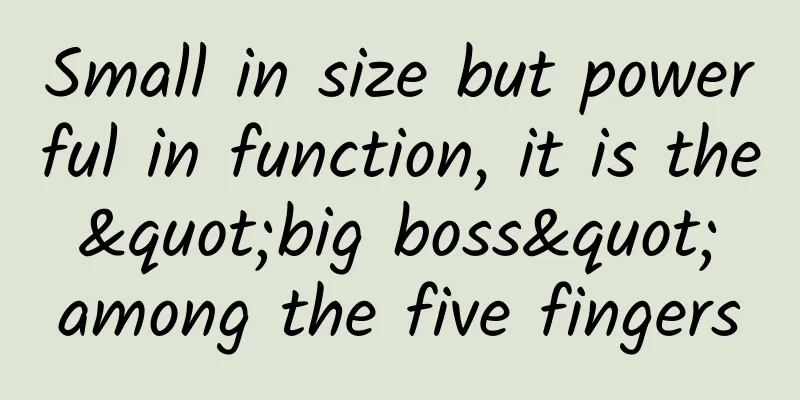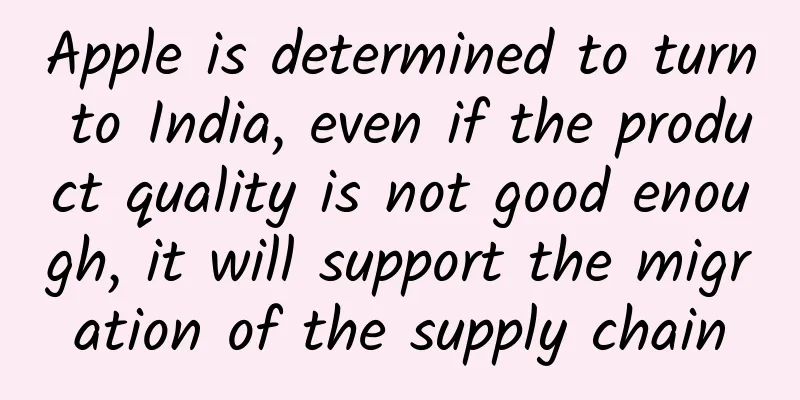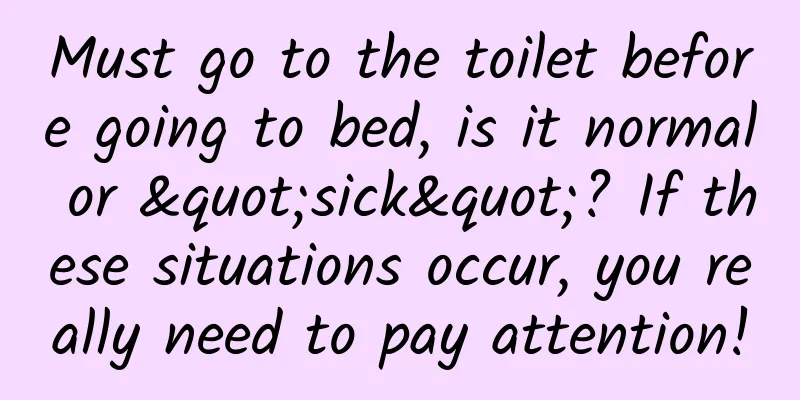Small in size but powerful in function, it is the "big boss" among the five fingers

|
Do you know which of our five fingers is the most important? Whether it is the flexible and powerful index finger or the romantic ring finger, as mobile phones continue to play an increasingly important role in our lives, the delicate and inconspicuous little finger seems to be becoming more and more important... But in fact, if you have to choose the most important one among the five fingers, it would undoubtedly be the thumb. The "big brother" among five fingers ✦ How important is the thumb? The "Hand Function Evaluation Standard" stipulates that if the hand structure is intact, the hand function is 100%, and it is divided among the five fingers according to their range of motion and normal function needs. Among them, the thumb accounts for 40% of the entire function, and among the other fingers, the one with the highest functional weight only accounts for 20% of the hand function. It can be seen from the "Standards for Identifying the Degree of Human Body Injury" that in the part about hand injuries, regulations are also made for severed injuries of different fingers: if the thumb of a hand is severed or missing beyond the interphalangeal joint, it is considered a serious injury; if the index finger and middle finger other than the thumb are severed or missing beyond the distal interphalangeal joint, they can only be treated as minor injuries. You should know that in medical appraisal, there is a big difference between these two types of injuries. Minor injuries refer to injuries that cause partial impairment of a person's limbs or appearance, hearing, hearing or other organ functions, or other injuries that are moderately harmful to a person's health; while serious injuries refer to injuries that cause disability of a person's limbs, disfigurement, loss of hearing, loss of vision, loss of other organ functions, or other injuries that are seriously harmful to a person's health. Behind such "unequal" treatment, the importance of the thumb is evident. "Unique" & "Unsurpassed" ✦ Compared with other fingers, the thumb has a unique anatomical structure, which is the basis of its powerful function. The bones of our hands are composed of 8 carpal bones, 5 metacarpal bones and 14 phalanges. The connections between the bones can be divided into carpometacarpal joints, metacarpophalangeal joints and interphalangeal joints. These structures together constitute one of the most complex parts of the human body and can help us complete many operations in daily life. Among them, the thumb has only two phalanges, but it is the most flexible of the five fingers. One of the important reasons is that the thumb's wrist-metacarpal joint is a double-concave saddle-shaped structure, which is like a "universal wheel". Compared with a single-axis pulley joint (such as the knee joint), it has higher flexibility and is more stable than a multi-axis ball-and-socket joint (such as the shoulder joint). Therefore, when making various movements, the thumb can be positioned relative to the other four fingers and play a supporting role. At the same time, there are abundant muscles around the thumb, which account for 39% of the entire hand muscles. The "thenar eminence" composed of the abductor pollicis brevis, flexor pollicis brevis, opposition pollicis and adductor pollicis is not only more conducive to force generation, but also can control the thumb to perform extension, flexion, adduction and opposition movements. The only way to evolve ✦ What is even more surprising is that the flexible thumb structure also determines, to a certain extent, that humans are ahead of other animals in evolution. "Monkey-fingered Pterosaur" restoration image source: Internet Throughout the history of biological evolution, the thumb is not a "new thing". As early as 160 million years ago, the arboreal "monkey-fingered pterosaurs" had already developed an opposable thumb structure. About 70 million years ago, early primates also evolved a similar thumb joint structure. It was not until about 2 million years ago that some human ancestors evolved a thumb structure with dexterity similar to that of modern humans. The improvement of thumb function allowed human ancestors to throw and use tools better. In the medical field, when the human spinal cord or median nerve is damaged, the thenar muscles of the hand often atrophy, the thumb and index finger are close together and cannot be flexed and extended normally, and the person cannot work and live normally. This condition in which the thumb cannot function normally is called "ape hand" or "ape hand deformity." Schematic diagram of "Ape Hand Deformity" This also reflects that compared with other primates, human hands have unique structures and functions. Other primates, such as orangutans and chimpanzees, also have opposable thumbs or toes, but due to their long-term arboreal life, the phalanges of their other four fingers have become long and curved, and the thumbs are relatively short, making it difficult to bend the fingers and rotate them toward the center of the palm so that the thumbs touch the fingertips of the other four fingers. Not only that, walking with both hands on the ground also forces them to gain strength at the expense of flexibility, so it is difficult for them to grasp flexibly, and they are also far behind humans in tool making. Other primate grips As humans who are born with the convenience of a flexible thumb, it is undoubtedly a huge blow to suddenly lose the thumb. Therefore, clinically, the loss of the thumb is usually compensated by transplanting the patient's big toe to the hand. However, with the promotion of 3D printing technology and tissue regeneration technology, the current thumb transplantation technology no longer needs to "tear down the east wall to repair the west wall". What other important uses does the thumb have in daily life? Welcome to leave a message in the comment area to discuss~ Pangke will first give an example, isn’t the thumb used for “like”! Creative team: China Science and Technology Museum New Media Team Review expert: Wang Linyu, deputy chief physician of the Department of Orthopedics, the Second Affiliated Hospital of Tianjin University of Traditional Chinese Medicine |
<<: After reading this article, don’t say curling is just mopping the floor anymore!
>>: Science in the Week: Will Tying Your Hair Often Make Your Hairline Higher?
Recommend
20 versions of "fakes" without the original's true appearance? Scientific restoration reveals the mystery of the masterpiece
The exhibition "Frankness and Reality: The A...
Gaining 170 million users in 4 years, analyzing the operating strategy behind Keep
Recently, keep became popular again with its new ...
What are the number ranges for 400 telephone numbers?
When enterprises are handling 400 telephone numbe...
In Madagascar, a country full of amazing species, the giant lemur calmly looked at me
The Republic of Madagascar is located in southeas...
How to become an excellent information flow advertising optimizer?
In fact, everyone has read a lot of useful inform...
"People infected with COVID-19 have long-term abnormal lung function"? A secret to debunk this rumor
If you interpret the paper carefully, you will fi...
Absolutely hot, absolutely OK! On March 1, the first new energy pickup truck Changan Hunter will be launched
In the era of new energy and intelligence, cars s...
How to use new Java 8 features in Android N Preview
The Android team released Android N Preview with ...
What is the specific situation of Mongolia donating 20,000 masks? Where are these masks shipped from?
On March 2, the Mongolian Red Cross donated 20,00...
Exposed! Are “food scraps” cheap and delicious? The truth is…
Recently, the term "food scraps" has gr...
GITC——Annual gathering of China's Internet technology elites
[[120838]] GITC 2014 Global Internet Technology C...
Gao Maoyuan - 20 Lectures on the Innovation Code in the Internet Era: CODEX Innovation System Used by Baidu and Alibaba
Gao Maoyuan - 20 Lectures on the Innovation Code ...
Baidu promotion optimization practice: teach you how to do Baidu promotion step by step (Part 1)
Due to the occupation of Baidu promotion position...
What are the tricks and tricks for bombarding the circle of friends with Alipay red envelope search codes?
This article is a brief introduction to the Alipa...
Growth hacking in action: a complete case study to explain the core operation methods
The concept of growth hacking has been very popul...









